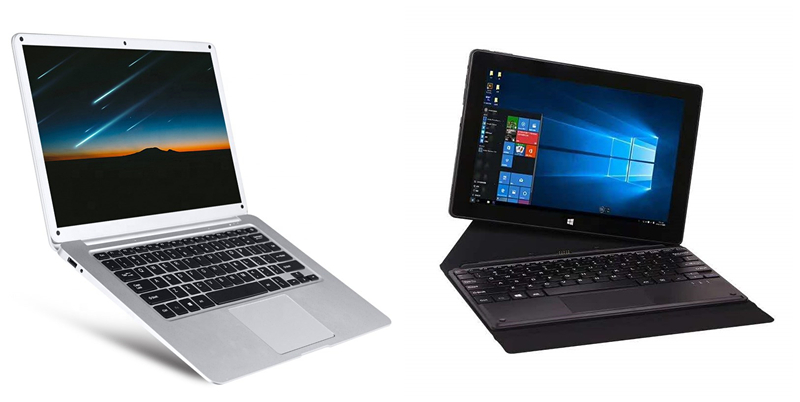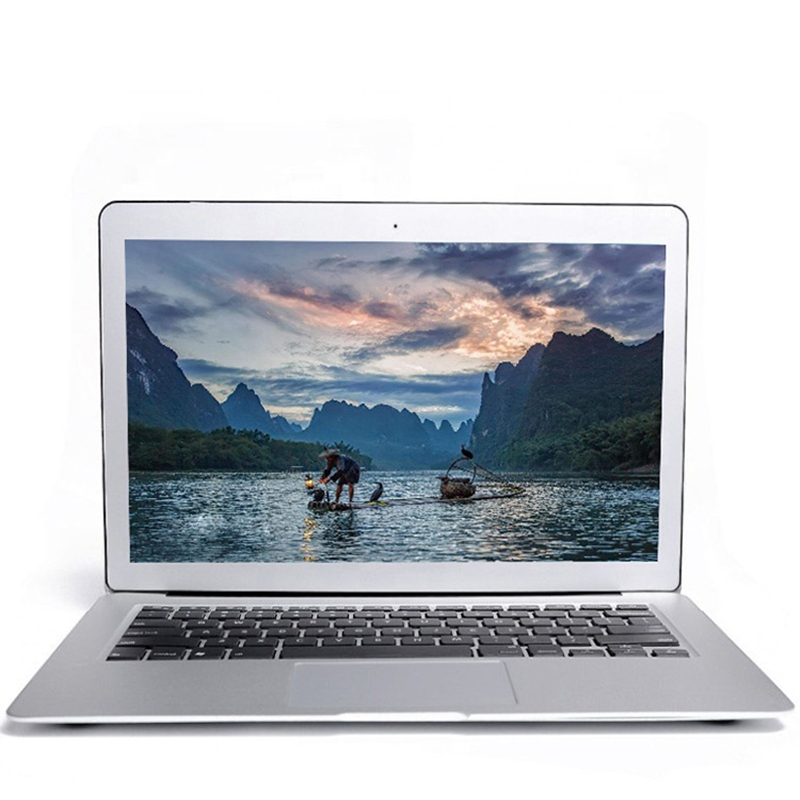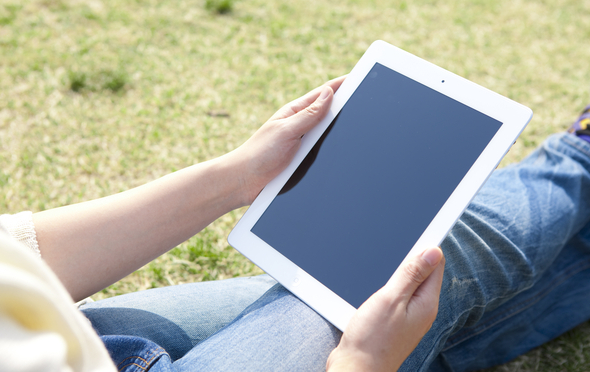Tablet vs 2-in-1 laptop: Which is better?
2021-09-16

There’s really no sense in arguing the merits of tablets vs 2-in-1 laptops, unless you’re trying to decide which portable is right for your needs. Each has its own advantages over the other while also lugging its fair share of drawbacks. So, it’s more of a matter of which is best for you.
When it comes to tablets vs 2-in-1 laptops, deciding which one to go for is more than just a matter of power and price. On one hand, tablets are extremely portable and easy to handle. On the other, 2-in-1 laptops are more versatile with their ability to run full-featured applications, port selection, and multiple modes.
If you aren’t as tech-savvy or just don’t have much experience with either, you might have a tougher time making that choice. So, we are here to break all that down for you. In the battle of tablets vs 2-in-1 laptops, there might not be an ultimate winner, but one is definitely more ideal for you than the other, and we’re here to help you figure that out.
Tablet vs 2-in-1 laptop: price and availability
It’s a common misconception that tablets are cheaper than laptops, though it might seem like a fair one – tablets, after all, are generally smaller and have more limited functionality. Unfortunately, that couldn’t be further from the truth, which means that when it comes to tablets vs 2-in-1 laptops, you can’t just base your decision solely around price and budget. There are tablets that will set you back much more than many hybrid notebooks, and there are a handful of hybrids that are cheaper than some of the mid-range tablets.
If you’re willing to splurge, there’s the Samsung Galaxy Tab S7 Plus that starts at $849.99 (£799, AU$1,549) and the iPad Pro 2021, which starts at $1,099 (£999, AU$1,649). Those are about on par with the Dell XPS 2-in-1 (2020) that will set you back $1,099 (around £900, AU$1,400) for its base model and the Acer Spin 5 that starts at $999 (£899, about AU$1,400).
On the other end, if you’re looking to economize, something like the Lenovo Tab P11 Pro ($499.99 / £449.99) or the Samsung Galaxy Tab S6 Lite ($349 / £349 / AU$649) should suit you nicely in the tablet department, or the much-lauded Lenovo IdeaPad Duet Chromebook ($279.00 / about £225 / AU$405) if you want a notebook.
Finally, for those with a bit more mid-range budget, tablet options include the iPad Air 4 ($599 / £579 / AU$899) and the Samsung Galaxy Tab S ($649.99 / £619 / AU$1,149) while convertible laptop options include the HP Envy x360 13 (2021) ($699 / about £500 / AU$950).
The great thing about this, however, is that no matter what your budget is, you'll find a great hybrid laptop or tablet that will be in your price range.

Tablet vs 2-in-1 laptop: design and features
Where your decision starts to matter in the tablets vs 2-in-1 laptops debate is in design and features. Although convertible laptops have a tablet mode and tablets are able to offer that traditional laptop form factor with just an additional keyboard-and-trackpad accessory, the experience is never going to be the same.
2-in-1 laptops are easily expandable and more versatile due to their wider selection of ports, having other modes available besides laptop and tablet, and bigger screen options. So, they might serve you better if you want a bigger display to spread out or the flexibility of connecting any necessary peripheral – whether that to you means a mechanical keyboard and a mouse or an external SSD and a dedicated webcam.
Still, with the exception of those with detachable keyboards, most of these hybrid laptops are much thicker and heavier in tablet mode – and are therefore bulkier to use. That’s especially true with the 15-inch and 17-inch ones. It makes for a less comfortable experience if you want to sink into your couch at the end of the day and play a game or scroll through websites and social media platforms.

The beauty of tablets is that they’re thin and lightweight enough that you can use them just as easily in bed as it is at your desk. They’re also better travel companions because of that portability. And, although they often only have one or two ports on offer, they also have a couple of other ways via which you can connect accessories. There’s, of course, Bluetooth connectivity, but also the Smart Connector and even possibly MagSafe in the very near future (for iPads).
Just bear in mind that even the most premium tablets are still limited in peripheral functionality. For example, while both iPads and Samsung Galaxy Tabs have mouse or trackpad support, it still isn’t as seamless as on a traditional Windows laptop. If such limitations are something you can live with, then you might benefit more from a tablet’s compact form factor.
Tablet vs 2-in-1 laptop: performance
For right now at least, tablets cannot beat 2-in-1 laptops in terms of power. That isn’t to say that tablets aren’t extremely capable in their own right. The latest iPad Pros, for one, are powerful enough to see you through your video editing needs on the go – thanks in large part to that M1 processor they’re fitted with. Meanwhile, the Samsung Galaxy Tab S7 Plus, equipped with the fastest processor currently available for Android, is a delight to play games on.
However, hybrid laptops, particularly those touting a full operating system like Windows 10, generally have beefier CPUs and GPUs under the hood, making them capable of running full-featured software and apps that make a world of difference in terms of workflow. You may be able to easily edit your images on Lightroom Mobile, write up documents on the Google Docs mobile app, or even surf the internet on your tablet. But, your experience wouldn’t be as seamless and is going to be a tad limited.
On the upside, not everybody needs full-featured applications to meet their daily computing needs. If you’re a creative or business professional, then yes, you’ll need the more potent innards and operating system of a 2-in-1 laptop. But, if all you need is a device to see you through your email, entertainment, and social networking demands, then you might be better off with a tablet.
Whichever you choose, you’ll be happy to know that both are on par when it comes to battery life. These days, both the best tablets and the best 2-in-1 laptops offer anywhere from 10 to 12 hours of longevity on average, which means that you can leave the charger at home if you want to commute or travel light.
Tablet vs 2-in-1 laptop: verdict
In the tablet vs 2-in-1 laptop arena, don’t expect a true champion. Each portable has its share of advantages and disadvantages, so your decision ultimately falls on what you need.
If you don’t require a whole lot of power and are happy to put up with the limitations of mobile apps, either because you won’t use them for any task that requires a smoother, more seamless workflow or because portability is much more important to you, then an excellent tablet might be a better fit. You can always expand its functionality by purchasing peripherals like Apple’s Magic Keyboard or the Samsung S Action Mouse, granted if you’re willing to pay more for them.
If, on the other hand, you do require a portable with enough power and versatility to see you through your daily productivity and creative tasks in a much more immersive way, 2-in-1 laptops come with exactly the right tools for that, from their selection of ports and modes to their full OS and more robust engine. And, even though they might not be as light and thin as tablets, they are portable in their own right – so much so you’d be happy to bring them along in your commutes.




